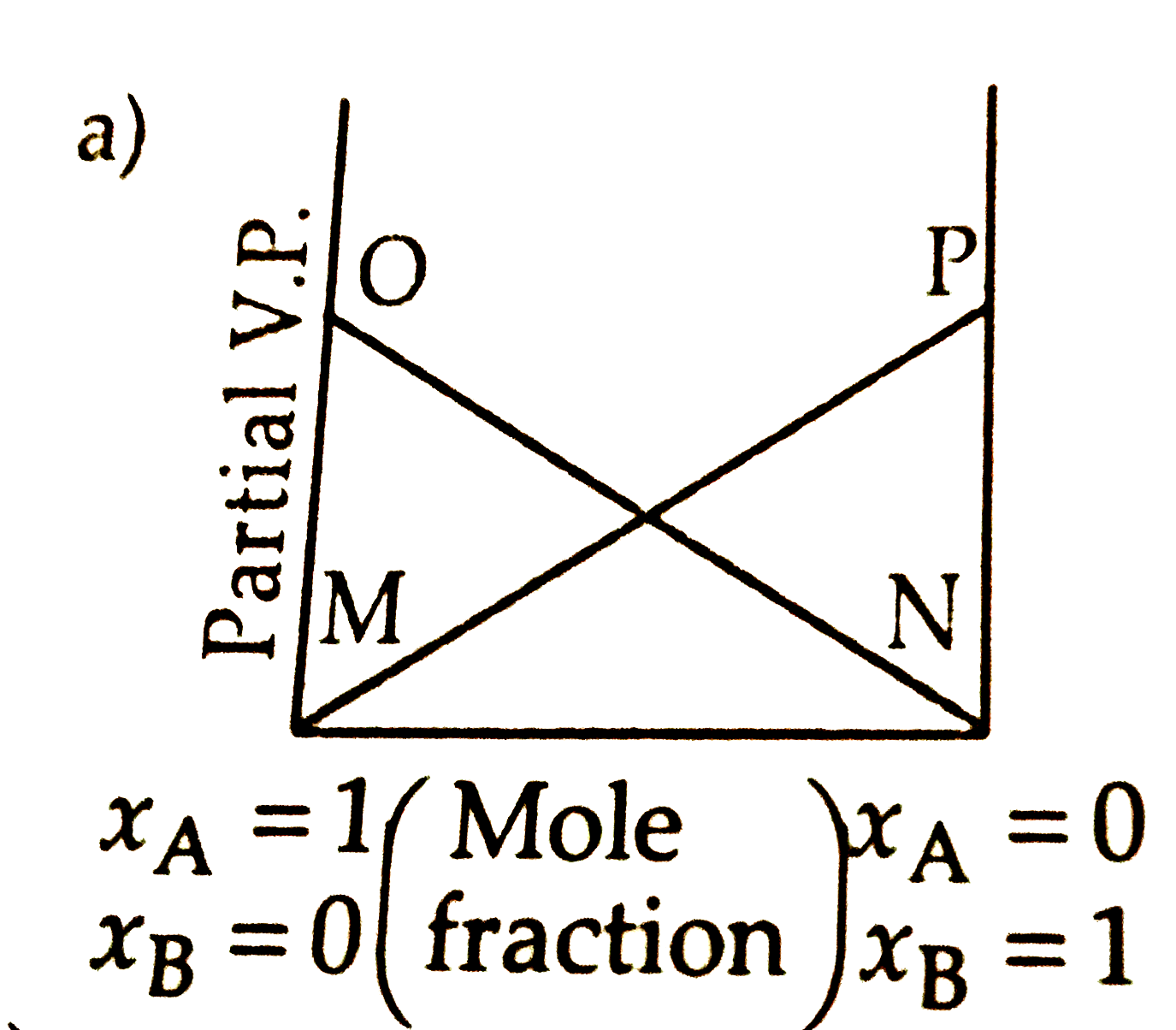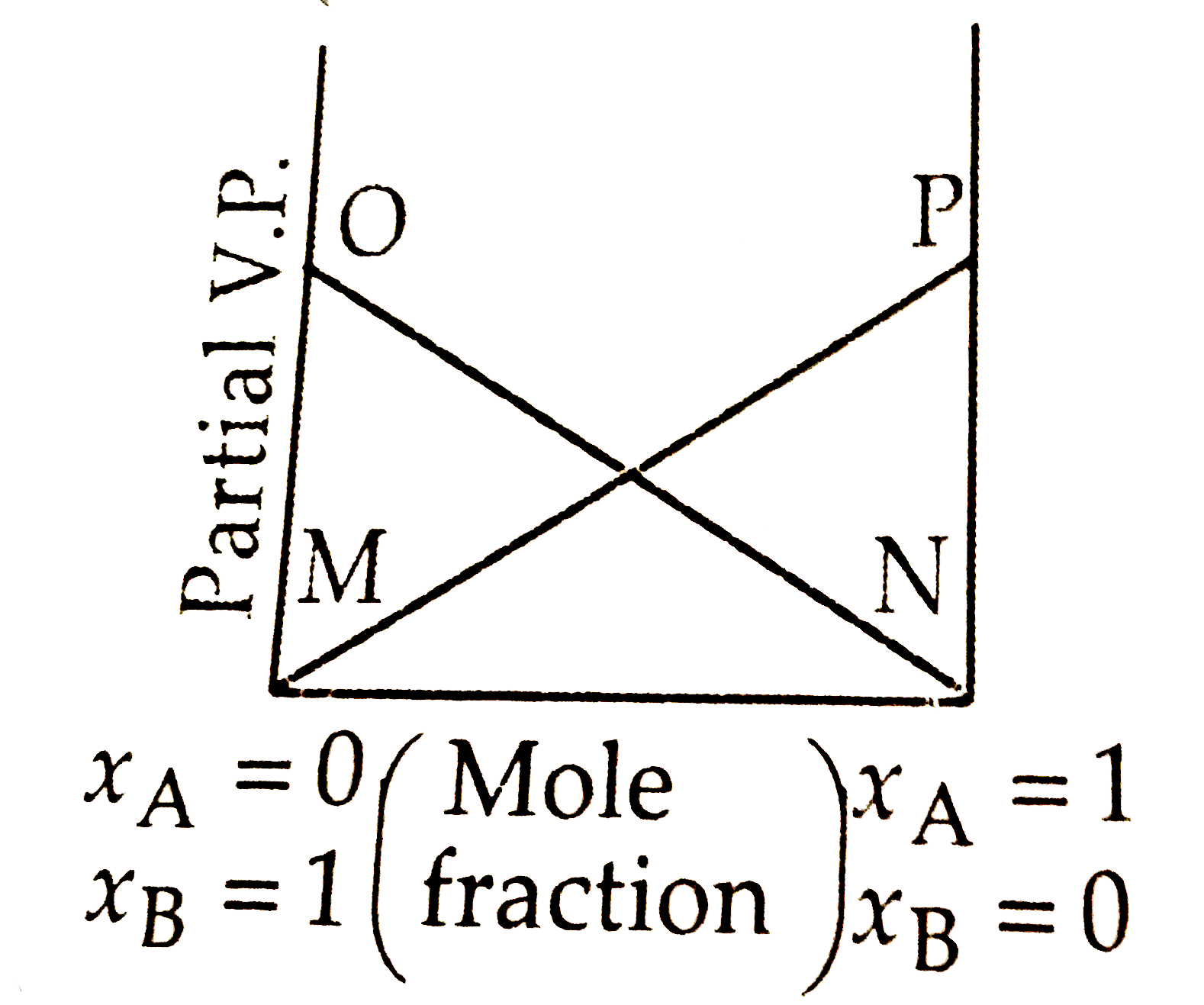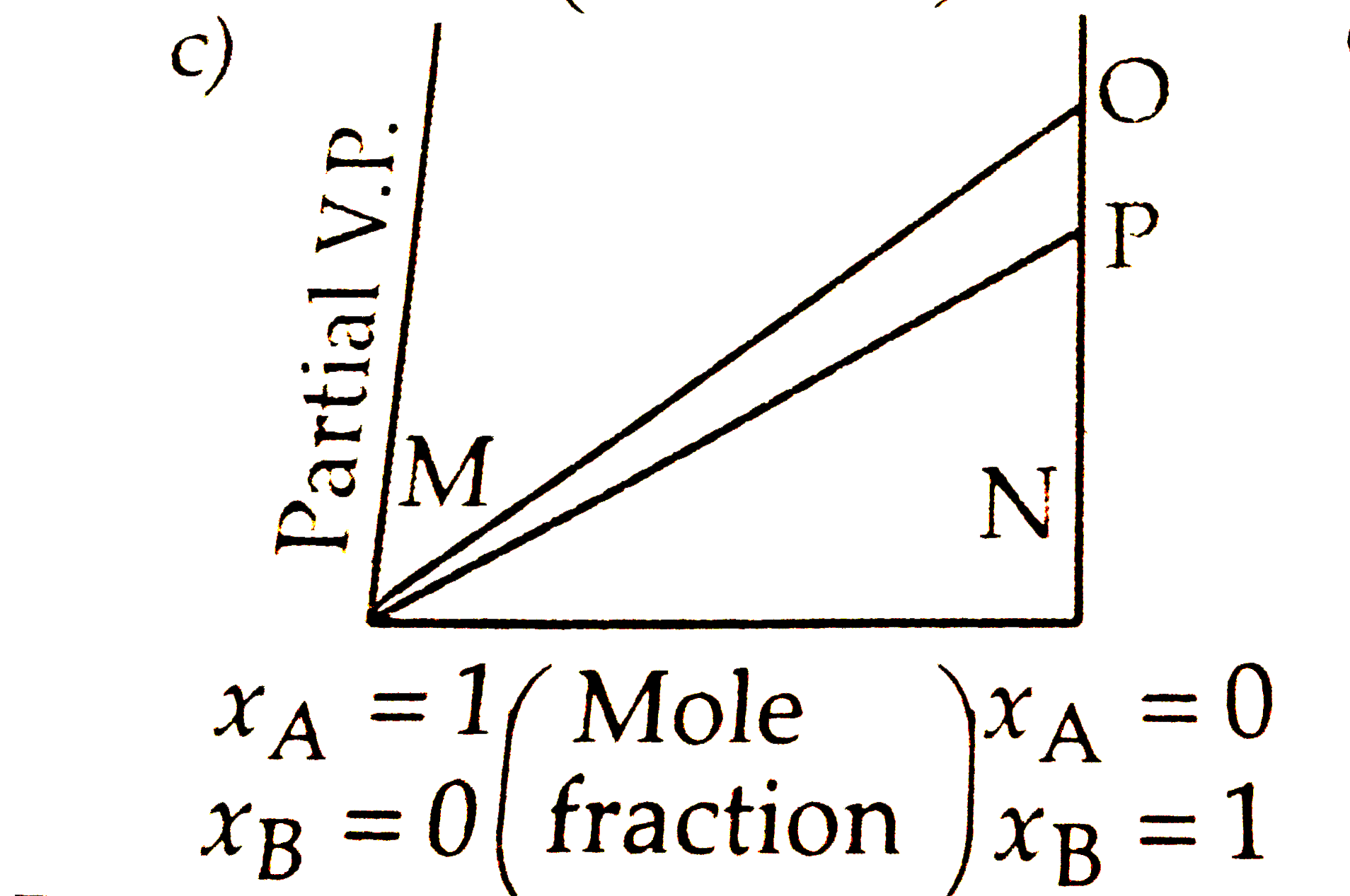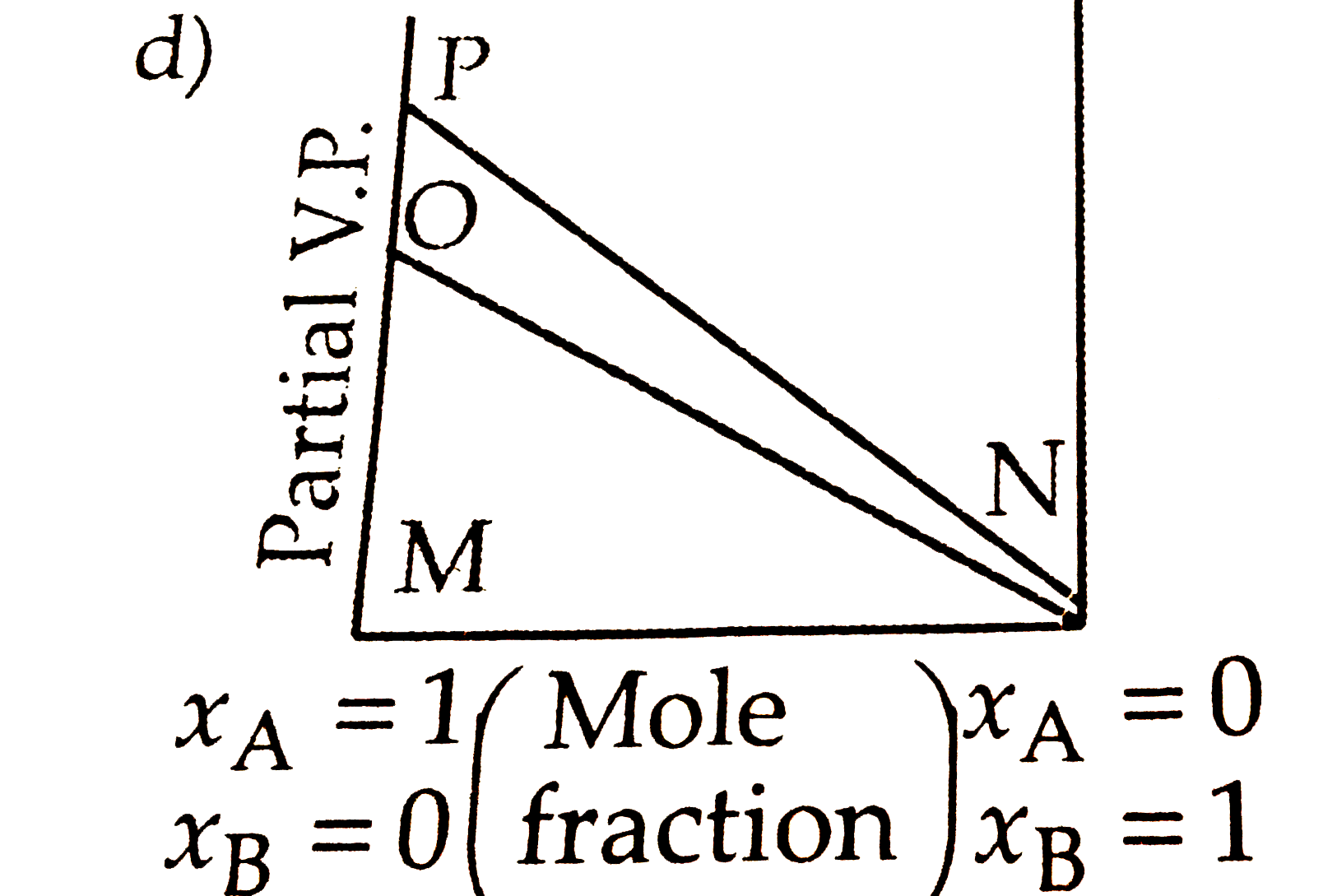In a solution of the miscible volatile liquids A and B, the plots of their partical V.P. Vs their mole fractions is given by (Assume, V.P. of pure Agt V.P. of pure B)




The correct Answer is:A
According to Raoult's lawof partial vapour pressure.
Partial V.P.(P) of a component in a solution =V.P. of pure component(P)×its mole fraction(x) in the solution i.e. PS=PO×x.
This is an equation of a straight line. Hence if PO is plotted against x a straight line passing through the origin and with positive slope is obtained.
Hence options (c) and (d) are incorrect. Now in option (a) and (b), points O and P represent V.P. of pure A and B respectively, and as V.P. of pure A gt V.P. of pure B. The correct option is (a) .
Topper's Solved these Questions
- SOLUTION & COLLIGATIVE PROPERTIES BOOK - NIKITA PUBLICATIONCHAPTER - SOLUTION & COLLIGATIVE PROPERTIES EXERCISE - Multiple Choice Questions (Numericals)
175 Videos
- SOLUTION & COLLIGATIVE PROPERTIES BOOK - NIKITA PUBLICATIONCHAPTER - SOLUTION & COLLIGATIVE PROPERTIES EXERCISE - Questions from Competition Exam
43 Videos
- SOLID STATE BOOK - NIKITA PUBLICATIONCHAPTER - SOLID STATE EXERCISE - Question from Competition Exam
39 Videos
Similar Questions
Match the Column
Column-IColumn-II(A)Vapour pressure of binary solution of two miscible and volatile liquids when half of the liquid solution goes into vapour phase(p)P∘A−PP=χB(B)Vapour Pressure of two binary miscible and volatile liquids(q)P∘A+P∘B(C)Vapour pressure of binary solution of two immiscible and volatile liquids(r)(P∘A−P∘B)χA+P∘B(D)Vapour pressure of binary solution having non-volatile solute(s)√P∘AP∘B(t)Solution is ideal
View SolutionMole fraction of solute is 0.2 in solution then lowering in V.P ΔP=10. If lowering in V.P. ΔP=20 then mole fraction of solvent will be in solution :
View Solution
Knowledge Check
In very dilute solution the no. of moles of solvent are 10 time more than that of the solute. The V.P. of the solution would be (V.P. of pure solvent = 80mm)
A80mmB88mmC72mmD92mmMole fraction of solute is 0.2 in solution then lowering in V.P ΔP=10. If lowering in V.P. ΔP=20 then mole fraction of solvent will be in solution :
A0.2B0.4C0.6D0.8STATEMENT-1 : For solution of volatile liquids, the partial vapour pressure of each component in the solution is directly proportional to its mole fraction.
STATEMENT-2 : Always there will be lowering of vapour pressure on addition of non-volatile solute to a solvent.
STATEMENT-3 : If there is dissociation of non-volatile then the V.P. of solution increases.AT F TBF F TCT T FDF T F
STATEMENT-1 : For solution of volatile liquids, the partial vapour pressure of each component in the solution is directly proportional to its mole fraction.
STATEMENT-2 : Always there will be lowering of vapour pressure on addition of non-volatile solute to a solvent.
STATEMENT-3 : If there is dissociation of non-volatile then the V.P. of solution increases.
View SolutionPAandPB are the vapour pressure of pure liquid components ,Aand B respectively of an ideal binary solution,If xA represents the mole fraction of component A, the total pressure of the solution will be
View SolutionPAandPB are the vapour pressure of pure liquid components ,Aand B respectively of an ideal binary solution,If xA represents the mole fraction of component A, the total pressure of the solution will be
View SolutionThe vapour pressure (VP) of a dilute solution of non-volatile solute is P and the VP of a pure solvent is P∘. The lowering of the VP is
View SolutionThe vapour pressure (VP) of a dilute solution of non-volatile solute is P and the VP of a pure solvent is P∘. The lowering of the VP is
View Solution
